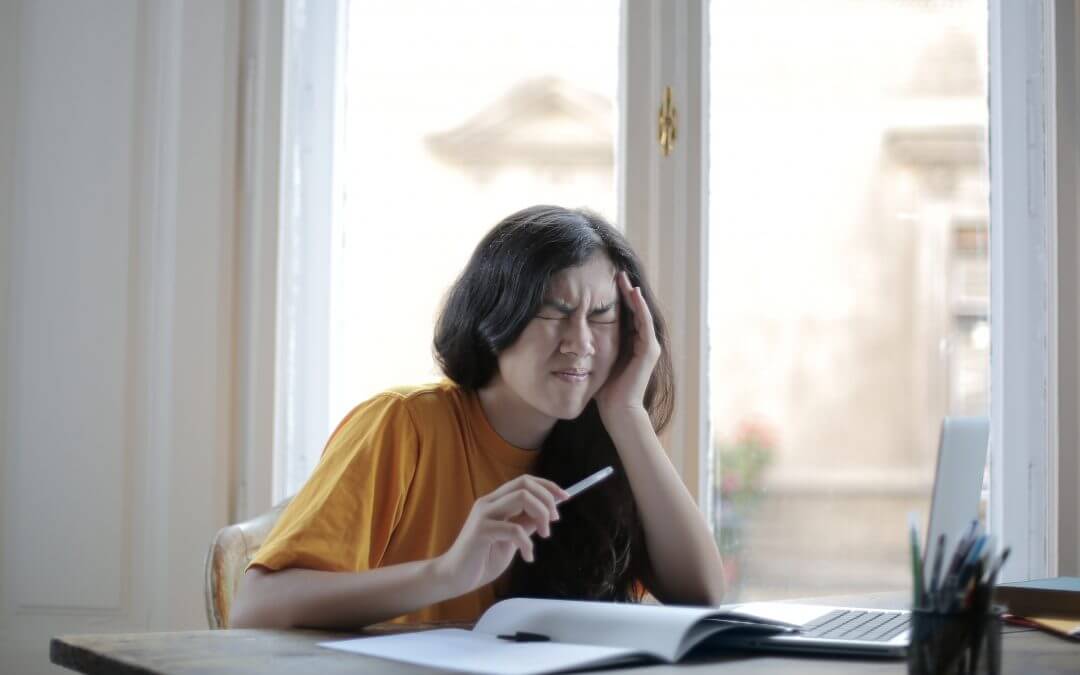It starts off as a dull background discomfort, often around your temples or where the back of your head meets your neck. Within a short period of time, the discomfort increases to a throbbing pressure and a general ache. For those with migraines or extreme headaches, the pain can be accompanied by a host of additional symptoms, including nearly unbearable pain, nausea, vomiting, and vision issues. For sometimes, the pain is short-lived, maybe a half an hour. For others, the pain can last a week, or even longer. For most who suffer frequent headaches, summer months only make the situation worse.
Along with Christmas Break, summer tends to be the busiest family time of the year. Expectations are built up for some fun-in-the-sun, whatever than might involve and wherever that might be. For many, however, August rates among the least favourite month of the year (along with January and February in case you were wondering!). There are many reasons for this stat, but with over 20% of women and 10% of men and children suffering from severe heat-related headaches and migraines, it isn’t hard to begin understanding why August is so difficult for some. Due to the popularity of our social media posts around headaches, this month we decided to feature some of the top reasons headaches are more common in summer months, and what to do to prevent them.
Why Do Elevated Temperatures Increase Headache Frequency?
Like any machine, your body’s design is able to regulate its temperature properly in ideal conditions. By sweating, shivering, and adjusting blood flow, the body has tools at its disposal to be able to preserve or lower body temperature effectively. If the body temperature becomes too much for these natural tools to regulate, however, heat cannot be dissipated as quickly as it is absorbed and overheating occurs. Left unchecked, your body overheating can lead to heat exhaustion, and then heatstroke, which is a very serious health hazard. Headaches are a symptom at the health exhaustion stage and should be treated as an immediate warning that immediate steps to relieve body temperature should be taken immediately.
It isn’t just the fact that your body has a harder time cooling off and can overheat that headache frequency increases in hotter months. There are a host of additional heat-related reasons for headaches to occur.
The most common reasons include:
-
Dehydration: Often accompanied by the body overheating described above, the body can lose water quickly, which in extreme cases can cause the brain to start shrinking away from the skull. Needless to say, this can be a painful process!
-
Environmental Pollution: As heat ‘cooks’ the air and the chemicals mixed in with it, significant levels of ozone gas can be created, which many people are highly sensitive to.
-
High Humidity and Changing Weather Conditions: Although not yet fully understood, the current prevailing theory is that rapid changes in weather can, in fact, trigger electrical and chemical reactions in the brain, which in turn cause a headache.
- Overexposure to Bright Light: Known as ‘photophobia,’ for some, too much bright light can trigger a headache.
How Can I Protect Myself in High Temperatures Against Headaches?
Unfortunately, while there is no method that can protect you fully against headaches when you venture outdoors, these tips will minimize the possibility:
-
Make Hydration Your Priority: Keep your body in peak hydration condition by drinking at regular intervals. If you start to feel thirsty, it means that your body is already dehydrated. Drink enough so that you never get thirsty! You likely know this already, but it still needs to be said: to keep as hydrated as possible you need to avoid all alcohol and caffeine-based beverages.
-
Minimize Direct Sunlight: Although a certain amount of sunlight is healthy for us, too much direct sunlight causes body temperature to rise quickly. Broad rimmed hats and sun umbrellas will help keep you shaded, and cool damp cloths or spray bottles can assist your body’s natural heat-reducing defences.
-
Be Aware of Weather Conditions: Do weather reports indicated possible changes in the weather? Is an air advisory in effect? Plan to take appropriate precautions, or even change your plans entirely.
-
It’s Cool to Wear Shades: If you suffer from photosensitivity, wearing appropriately shaded sunglasses is a must in bright conditions.
- Adapt Your Routine: If you exercise regularly outdoors, be sure your exercise regimen is altered to accommodate the heat. If your chores involve remaining outside for extended periods of time, consider enlisting family or friends to assist you, or take plenty of hydration breaks.
What to do if a Headache Strikes?
There are many ways to deal with a heat-related headache, but getting to a cool location and hydrating is an absolute must. Pain relievers and certain natural oils may also offer mild to moderate relief. For stubborn headaches, professional treatment can have a significant impact on pain and discomfort. Here at LiveWell, we employ many effective approaches to relieving the symptoms of heat-related headaches. The most common approaches include:
- Pilates: If your pain persists, learning mild exercises designed to increase mindfulness, relieve tension and stress, and improve posture and body alignment. Each of these can play a part in relieving the discomfort of long term head pain. See our Pilates page for more details.
-
Massage: Studies have demonstrated that proper massage techniques not only relieve symptoms for both headaches and migraines but can also, in fact, offer protection against reoccurrence. We invite to visit our massage services page for more details.
-
Acupuncture: Many studies affirm that acupuncture offers significant relief for chronic headache sufferers. Like massage, acupuncture not only helps with immediate relief, it can help safeguard against future headaches and migraines as well. Visit our acupuncture services page for further information.

